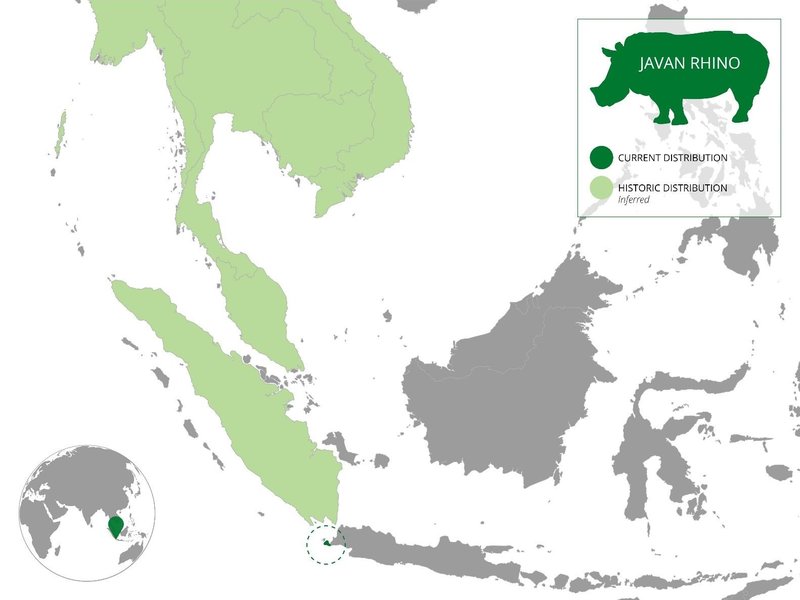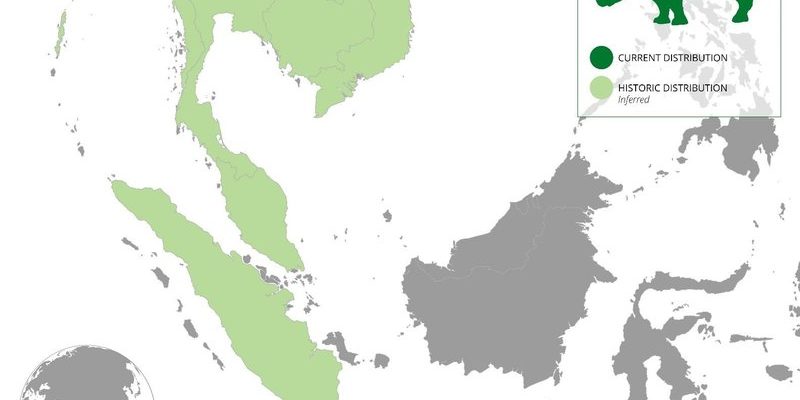
The Javan rhinoceros is a unique subspecies of rhino, and they’re not just wandering around anywhere. With a population that exists almost exclusively in one location, these animals have adapted to a specific environment that suits their needs. Let me explain more about their habitat and distribution, and why it matters to the survival of this magnificent species.
Understanding the Javan Rhinoceros
To get a better grip on where Javan rhinoceroses live, it’s essential to know a bit about them. With their smaller size compared to other rhinos and a single horn that can grow up to 10 inches, Javan rhinoceroses have a unique appearance that sets them apart. They are usually solitary, preferring to roam alone except when mothers are with their calves.
These rhinos once had a more extensive range, spanning across Southeast Asia. However, due to various threats, including habitat loss and poaching, their numbers have dramatically decreased. You might be wondering about their current population; there are only around 80 individuals left in the wild, all in one place!
Current Habitat of Javan Rhinoceroses
As of now, the Javan rhinoceros primarily lives in Ujung Kulon National Park, located on the western tip of Java, Indonesia. This national park is a UNESCO World Heritage Site, which means it’s recognized for its natural beauty and conservation importance. The Javan rhinos thrive in the park’s dense rainforests and swampy lowlands.
These lush habitats are rich in plant life and provide plenty of food, which is crucial since these big herbivores need to munch through a lot of vegetation every day. Think of it as a vast buffet of leaves, fruits, and shrubs all tailored to suit their picky palates.
The Importance of Ujung Kulon National Park
Ujung Kulon is not just a pretty landscape; it’s a lifeline for the Javan rhinoceros. The park’s remote location and challenging terrain help protect the rhinos from poachers while offering them a space where they can roam freely. It’s like a hidden treasure chest where these rhinos can live without the threat of being disturbed.
This national park is also a critical area for biodiversity—home to countless other species. By protecting the Javan rhinoceros, we are also safeguarding the broader ecosystem, ensuring that all the creatures, both big and small, have a place to thrive.
Climate and Environmental Factors
The climate in Ujung Kulon plays a crucial role in the life of the Javan rhinoceros. It’s tropical, which means it’s warm year-round with a lot of rain. This climate supports the diverse flora that makes up their diet. The abundance of rain also creates muddy areas that the rhinos love to wallow in, helping them cool down and protect their skin from parasites.
However, this rich environment is fragile. Changes in climate, such as rising temperatures or severe drought, could threaten the delicate balance of their habitat. If the vegetation that these rhinos rely on starts to dwindle, it could spell disaster for the already dwindling population.
Challenges in Their Habitat
Despite the protective measures in place, the habitat of the Javan rhinoceros is still under threat. The park often faces challenges from human encroachment, illegal logging, and even natural disasters like volcanic eruptions. While Ujung Kulon is relatively safe for now, you can’t help but worry about what the future holds.
There’s also the issue of climate change, as mentioned earlier. It poses significant risks to their habitat, making it essential for conservationists to keep a close watch on environmental changes. Protecting the Javan rhinoceros requires vigilant efforts to not only safeguard their immediate surroundings but also to mitigate broader environmental threats.
Conservation Efforts for Javan Rhinoceroses
Conservation organizations and the Indonesian government have dedicated significant resources to protect the Javan rhinoceros. They monitor the population closely using camera traps and other wildlife management techniques. This kind of surveillance is critical to understanding their behavior and ensuring their safety.
Additionally, local communities are involved in conservation efforts, helping to raise awareness about the importance of the Javan rhinoceros. Community-based initiatives, like ecotourism, provide education on the species and help sustain local economies while promoting wildlife protection.
By keeping the focus on conservation, we can help ensure the survival of the Javan rhino. It’s not just about saving one species but maintaining an entire ecosystem that thrives on the health of these magnificent creatures.
The Role of Education and Awareness
Education plays a massive role in the conservation of the Javan rhinoceros. By teaching people about their importance and the threats they face, organizations can foster a sense of responsibility and community pride in protecting the species. Awareness programs help local communities understand that a healthy population of Javan rhinos is vital for the local environment and economy.
This kind of grassroots effort is crucial for the long-term survival of these animals. We can all play a part in spreading the word about the Javan rhinoceros and the need to protect their habitat—and that starts with understanding where they live and why it matters.
The Future of Javan Rhinoceroses
Looking ahead, the future of the Javan rhinoceros is uncertain but not hopeless. With continued conservation efforts and community involvement, there’s a chance for their numbers to stabilize and eventually grow. Imagine if the Javan rhino not only survived but thrived, roaming the jungles of Java once again.
There’s also potential for expanding their range. If conservationists can create additional protected areas that mimic the natural habitats of the Javan rhinoceros, it could provide much-needed space for them to thrive. It’s a complex puzzle, but every piece counts.
In conclusion, the Javan rhinoceros is a remarkable creature, living in a unique and fragile habitat. Understanding where they live and the challenges they face is the first step towards ensuring their survival. By working together to protect their home in Ujung Kulon National Park and advocating for their conservation, we can help keep this extraordinary species alive for generations to come.

